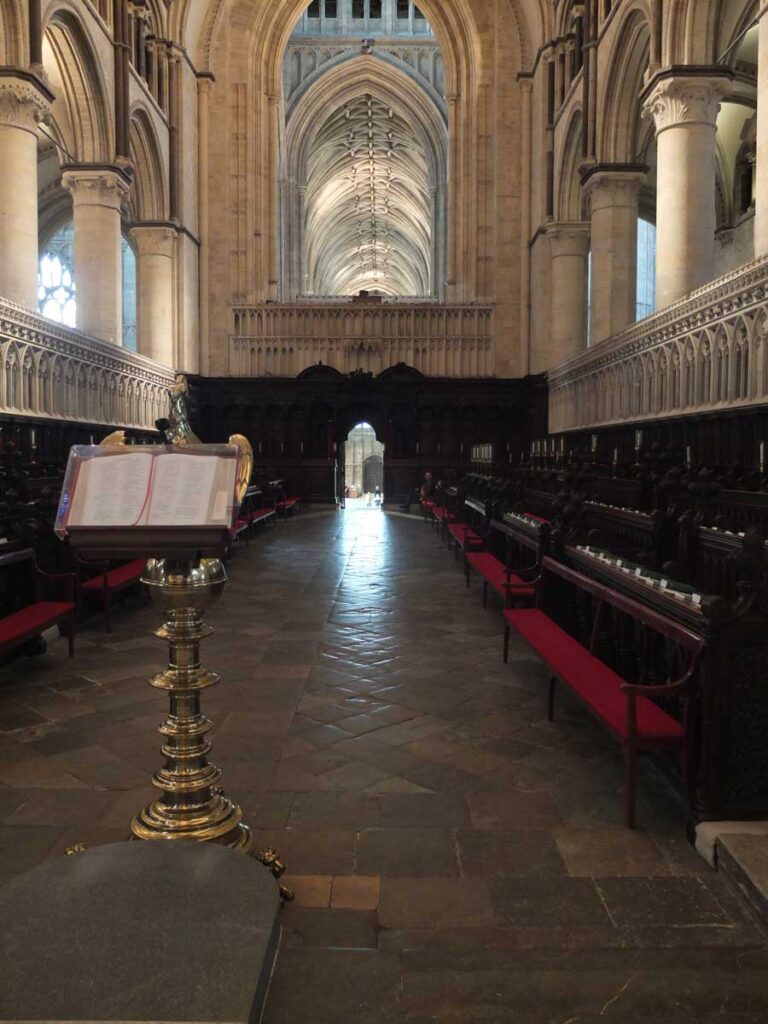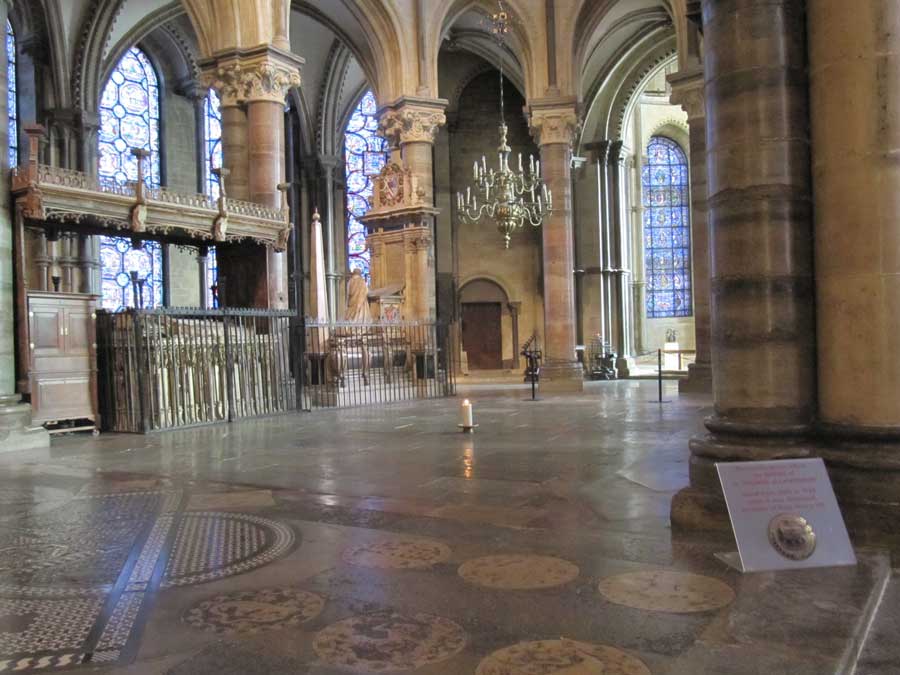he date of the individual stone floors in the cathedral east of the nave is largely unknown, although the marble pavement in Trinity Chapel is believed to date to c.1182-1184 and c.1213-1220. The majority of the stones in this part of the building pre-date the Reformation. Following the extension of the cathedral in the late twelfth century it is likely that additional stones for paving slabs were purchased for use in the ambulatory and the newly installed chapels. It is also reasonable to assume that the floor of Conrad’s “Glorious Choir” was paved in stone and following the fire of 1174 those stones that survived were relaid in the new building .
Many of the stone slabs are known to have been lifted, for instance when the underfloor heating was installed, and a number of these stones were undoubtedly repositioned. Having said that, most of the stone floor slabs were quarried on the Isle of Purbeck and were probably brought over as large consignments, some perhaps with the Purbeck Marble columns that were to adorn the church. The stones introduced for flooring during the medieval period can be broadly classified as Purbeck Marble and Purbeck Limestone. Perhaps installed at a slightly later date, because of their more easterly position, are the pavements in the south choir aisle and the ambulatory around the Trinity Chapel which are of Bethersden Marble.
In the south choir aisle, adjacent to the south wall, are several possibly machine-cut slabs of sandstone. Stones of this type are difficult to provenance unless a written record has been retained. They often go by the name of York Stone, a common misnomer as they may not have been quarried in Yorkshire, let alone York. Similar sandstone pavings commonly occur within the Coal Measures, a sequence of rocks laid down by large river systems in a deltaic environment during the Carboniferous. They are probably a twentieth (or nineteenth) century introduction and used because of their good slip resistance properties.
There are also a number of ledger stones incorporated into the cathedral floor, again many of which have been moved from their original position. A ledger stone is an inscribed stone slab to indicate the place of burial, often of an important local dignitary. Ledger stones can be made from a number of different geological materials and are not considered further here.


floor of Trinity Chapel
Geoff Downer 2019
